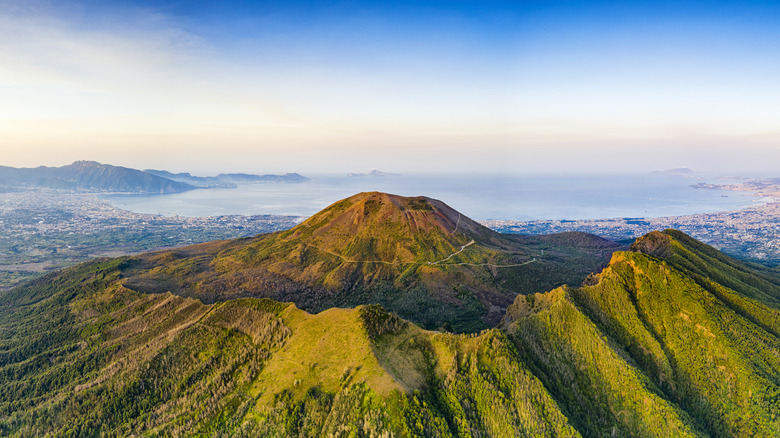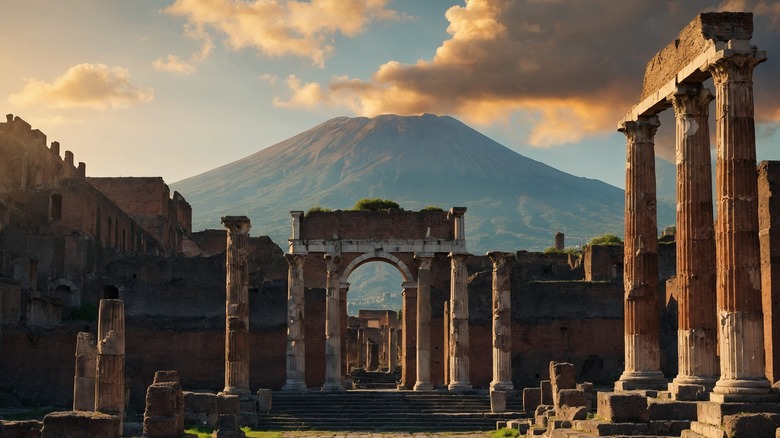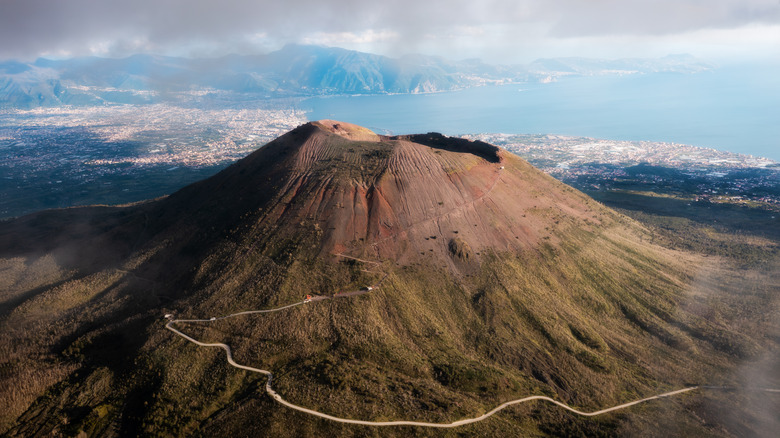Feel The Power Of Mother Nature With A Historic Hike Up One Of Europe's Largest Volcanos
As perhaps one of the world's most iconic volcanoes, Mount Vesuvius stands as a testament to the raw power of nature, towering over the Bay of Naples in southern Italy. At a height of 4,203 feet, this active volcano is one of the tallest in Europe and has shaped its surrounding landscape and the history of the Campania region for millennia. Its imposing presence and notorious past make it a popular destination for hikers, history buffs, and locals.
Vesuvius is part of the Campanian Volcanic Arc, which includes other geological wonders like the Campi Flegrei caldera and Mount Etna in Sicily — a bucket list volcanic hike. Its unique structure, featuring a large cone partially encircled by the steep rim of a summit caldera, offers visitors a chance to witness firsthand the dramatic results of volcanic activity spanning thousands of years.
The best time to hike Vesuvius is generally during spring and fall when temperatures are milder and paths aren't crowded. These seasons offer comfortable hiking conditions and beautiful scenery, with spring bringing colorful wildflowers to the slopes. The summer months can be uncomfortably hot and crowded, so if you do visit at this time, hike early in the morning to avoid high temperatures. Regardless of the season, it's crucial to check the current conditions and park alerts before planning your hike, as its accessibility can be affected by inclement weather or volcanic activity (which is why Japan's iconic Mount Fuji is closed for much of the year).
Mount Vesuvius' history
The history of Mount Vesuvius stretches back approximately 25,000 years, formed by the colliding tectonic plates of Eurasia and Africa. The volcano has experienced numerous eruptions, with eight major events occurring in the past 17,000 years. These eruptions have not only shaped the physical landscape but have also left an indelible mark on human history and culture.
The volcano's most infamous eruption in 79 AD buried the ancient Roman cities of Pompeii and Herculaneum, preserving them in ash and providing an unparalleled glimpse into the ancient life of the Roman Empire. Today, over 2 million people live in the vicinity of Vesuvius, making it one of the most dangerous volcanoes in the world due to its potential for devastation. The eruption of 79 AD, famously described in letters by Pliny the Younger to the historian Tacitus, stands as one of the most catastrophic volcanic events in recorded history. This eruption buried two busy cities under layers of ash and pyroclastic material, preserving them in excruciating detail and providing insights into Roman life that visitors can still see today. However, some wonder whether Pompeii is a must-see destination or a tourist trap.
Mount Vesuvius' eruptions have dramatically shaped the surrounding landscape, creating an area that draws hikers from around the world. The volcano's violent past has left behind a terrain of stark contrasts. Within the Vesuvius National Park, visitors can trek through thick vegetation and vineyards that have been enriched by volcanic soil. If you're feeling particularly adventurous, the hike to the barren, rocky summit scarred by lava flows offers breathtaking views of the Bay of Naples and the ruins of Pompeii.
The hike to Mount Vesuvius
Hiking Mount Vesuvius is an opportunity to witness the power of nature up close. The trek to the summit rewards hikers with panoramic views of the surrounding countryside, and the crater itself offers a glimpse into the heart of this sleeping giant. The occasional plumes of smoke and the ever-present smell of sulfur serve as potent reminders that Vesuvius is still active, and the closer you get to the summit, the more you realize that hiking Vesuvius is not just a physical journey but an emotional one, too.
Several hiking trails wind up the volcano, all catering to different skill levels and interests. One particularly popular route is Il Gran Cono, or "The Great Cono," which leads to the crater rim. This challenging trail is approximately 2 miles, gaining about 558 feet in elevation and offering unobstructed views of the surrounding area. For a more comprehensive experience, the Vesuvius National Park maintains a network of 11 hiking paths totaling over 30 miles of walkways, including Along the Cognoli, an 8-hour trek with birding opportunities, or a route within the Tirone-Alto Vesuvius Forest Reserve. The River of Lava is a walking path along a lava flow, displaying scientific marvels of volcanoes.


